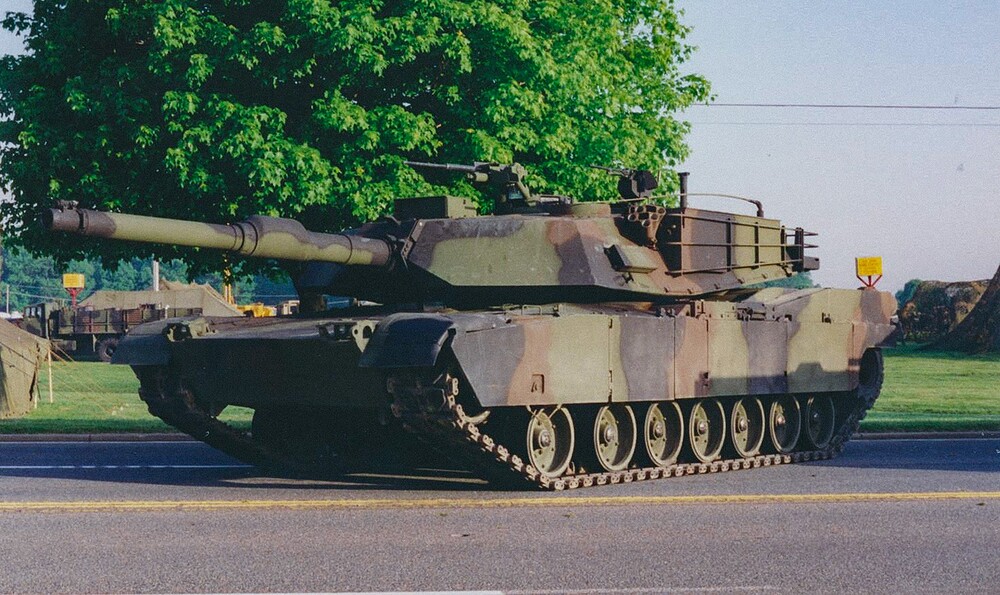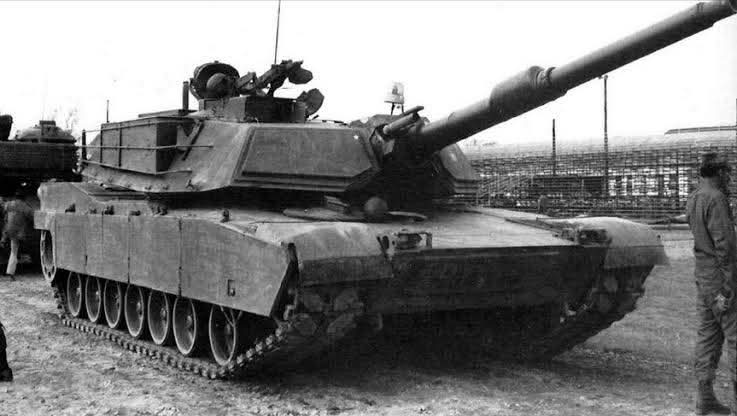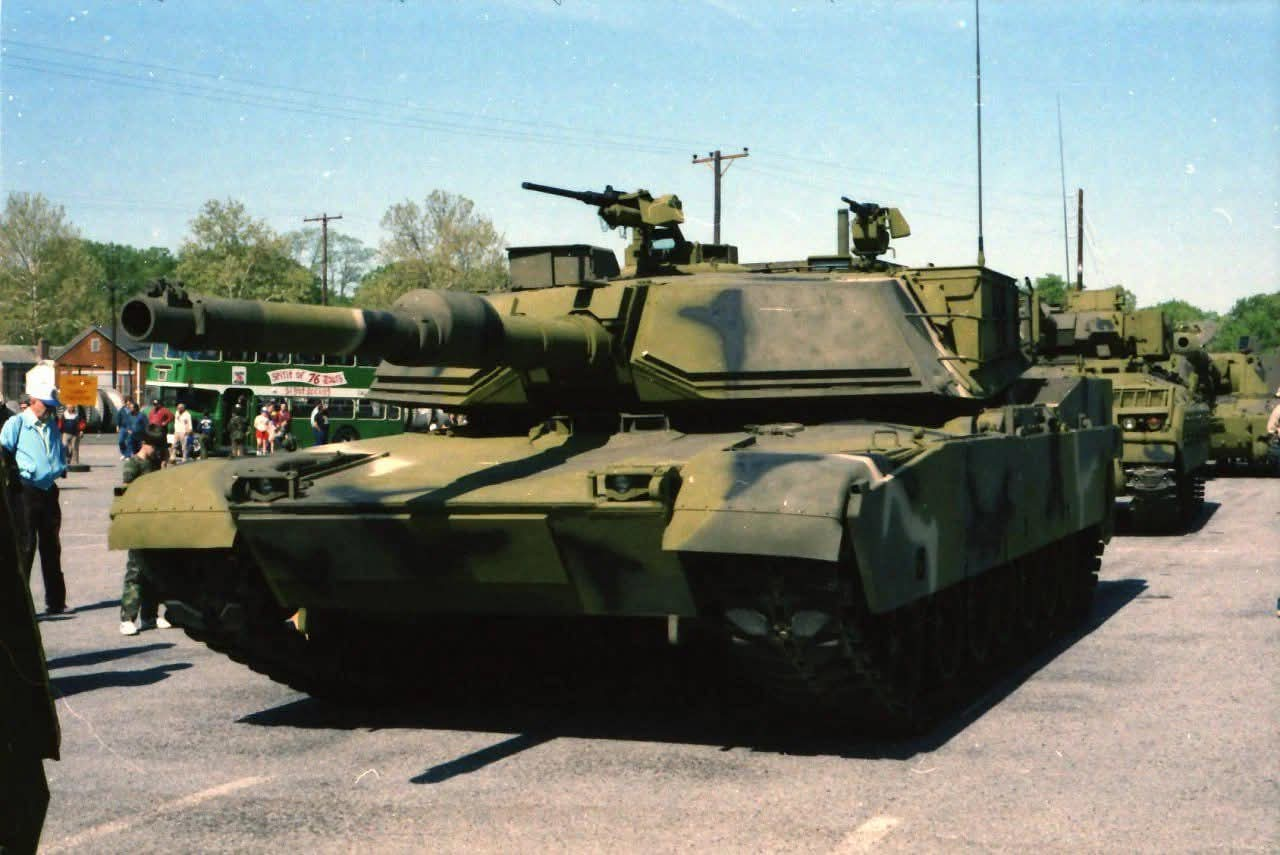- Yes
- No
Welcome to a suggestion for the M1E1 Abrams! This is a prototype series of the famous M1 Abrams family, the first to be armed with a 120 mm smoothbore gun. While it might sound like the M1A1 in-game, the M1E1 would have the original M1 Abrams turret, as well as older ammunition, notably the XM827 APFSDS round, which is German DM13 with a depleted uranium core. It could also potentially receive the prototype for M829, XM829. I think the M1E1 would be a good addition to the US tree, adding to the Abrams family in-game.
History
An M1 Abrams and Leopard 2 at Waffenplatz Thun, Switzerland, 1981.In 1978, a year before the M1 Abrams entered production, the Secretary of the Army, Clifford Alexander Jr. announced that later production versions of the Abrams would use the larger 120 mm smoothbore gun developed by Rheinmetall. This was deemed necessary owing to the better range and penetration offered by the 120 mm gun. Work had begun even prior to this announcement, as the M1 was seen to have a certain amount of growth potential, with Chrysler and General Motors modifying their XM1 prototypes to be able to mount the larger gun. Production M1s also featured a redesigned gun trunnion to accommodate for the larger gun. Around this time, Watervliet Arsenal had obtained a license to produce the German 120 mm smoothbore gun, designated XM256, and the gun underwent firing trials on a stationary stand.
In the meantime, the U.S. Army went ahead with the 105 mm M68A1 for the M1. In 1981, the M1 was undergoing a ‘Block I’ improvement program. Part of this was to improve armor protection, a modified fire control system, as well as an overpressure NBC system. With the addition of the 120 mm gun, improvements to the suspension, transmission, and final drives would have to be done. The resulting prototypes from this M1 Abrams Block I improvement program were designated M1E1, with the first two of 14 prototypes delivered to Aberdeen Proving Ground and Chrysler for testing purposes in March of 1981.
While the M1E1 underwent testing, a few of the improvements were added to M1s on the production line, creating the interrim IPM1, or Improved Performance M1. Some of these changes included the improvements to the final drive, such as the final drive gear ratio being changed from 4.30:1 to 4.667:1, the pressure in the hydraulic shock absorbers increased from 3000 psi to 3500 psi. The changes to the final drive gear ratio reduced the maximum governed speed from 45 to 41.5 miles per hour. As well as this, a new detachable stowage rack was installed on the turret bustle. The IPM1s featured every feature the M1E1 had, barring the 120 mm gun and NBC system.
An M1E1 at Aberdeen Proving Ground, early 1980s.On the testing side of things, the M1E1 prototypes received steel plates welded to the turret front, in order to simulate the heavier armor the production M1E1 was to have. Due to the larger ammunition, the vehicle’s main gun ammunition load was reduced to 40 rounds, with 34 in the bustle ammunition rack, and 6 in the rear of the hull. The ammunition used for testing by the M1E1 were early 120 mm rounds, including the licensed DM13 APFSDS-T round, designated XM827, to be replaced later on by the XM829 APFSDS-T, as well as the XM830 HEAT-MP-T round, with plans for a follow-on HEAT round designated XM859. For practice ammunition, the M1E1 would use XM865 and XM831, with XM866 acting as an interim training round.
Due to the larger gun, the fire control system was modified further, with a new gearbox for elevating and depressing the gun, as well as some software and electronic upgrades. The coaxial 7.62 mm M240 position also underwent minor modifications, with a new mount for the ammunition box, feed, and ejection chute. A single M1E1 was modified to use the M43A1 detector and AN/VDR-2 radiac for the purpose of detecting NBC agents. As a backup, the M13 filtered air system was retained. Originally, this system was to use a macroclimate system, as opposed to the microclimate crew-cooling vest, but not wanting to add further weight, and due to the extra cost, this was abandoned.
By 1984, the M1E1 was in its Development Test/Operational Test phase, and was expected to enter production in 1985 as the M1A1. Following its extensive DT/OT phase being completed, the M1E1 was standardized as Tank, Combat, Full-Tracked, 120-mm gun, M1A1 on August 28th, 1984. Approval for full production of the M1A1 was granted in December of that year, and the first production vehicles began rolling off the production lines at Lima Army Tank Plant in Ohio in August of 1985, with production testing beginning the following year.
After entering service with the U.S. Army and U.S. Marine Corps, the M1A1 would most famously see combat during the 1991 Gulf War, taking part in the invasion of Iraq and future wars where the U.S. Military was, being replaced in U.S. Army service by the M1A2, and serving with the Marines until the disbandment of the U.S. Marine Corps’ tank battalions in 2021.
M1A1s from the 3rd Armored Division roll out during Operation Desert Storm, February 19th, 1991.Specifications

- Crew: 4
- Mass: 57 t
- Length: 9.8 m
- Width: 3.6 m
- Height: 2.8 m
- Main armament: 120 mm XM256
- Main armament ammunition: 40 rounds
- Secondary armament: 2× 7.62 mm M240 (10,000 rounds coaxial & 1,400 rounds for loader) & 1× 12.7 mm M2HB (900 rounds)
- Gun elevation: -10°/20°
- Traverse rate: 360° in 9 seconds
- Engine: 1,500 hp Avco-Lycoming AGT1500
- Maximum speed: 66.7 km/h
Sources
- https://tanks-encyclopedia.com/coldwar-usa-120mm-gun-tank-m1e1-abrams/ (Note, article incorrectly states that none survived)
- Hunnicutt, R. P. (1990). Abrams, A History of the American Main Battle Tank. Presidio Press.
- Mesko, J. (1989). M1 Abrams in Action. Squadron/Signal Publications.
- M1E1 TANK PROGRAM




























